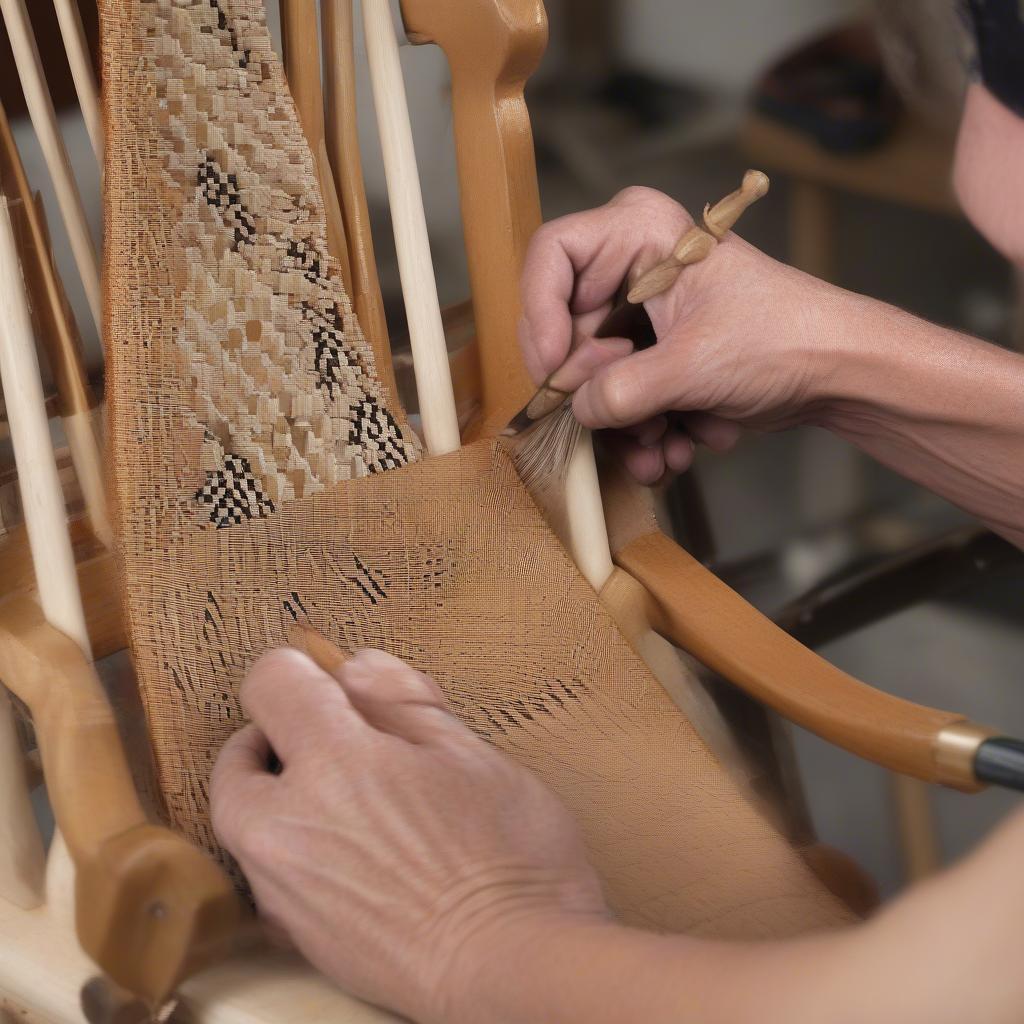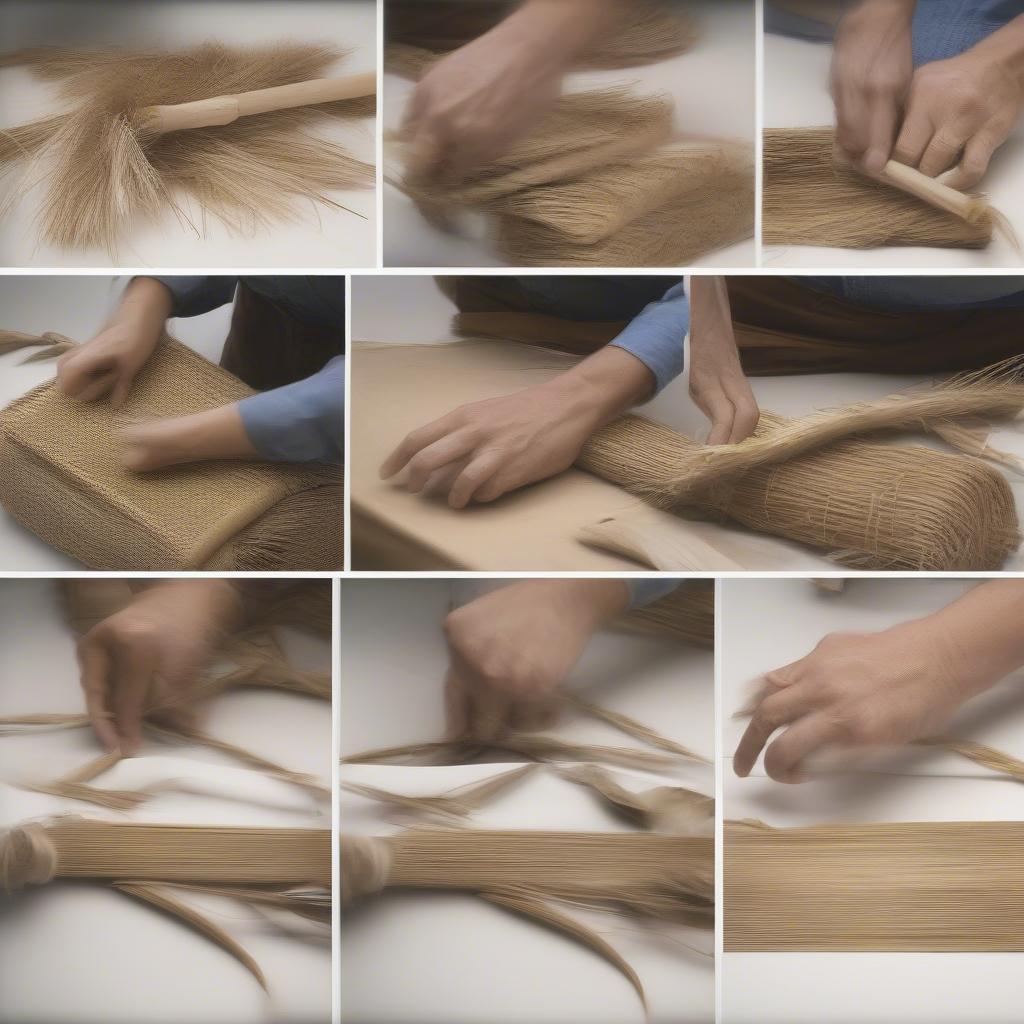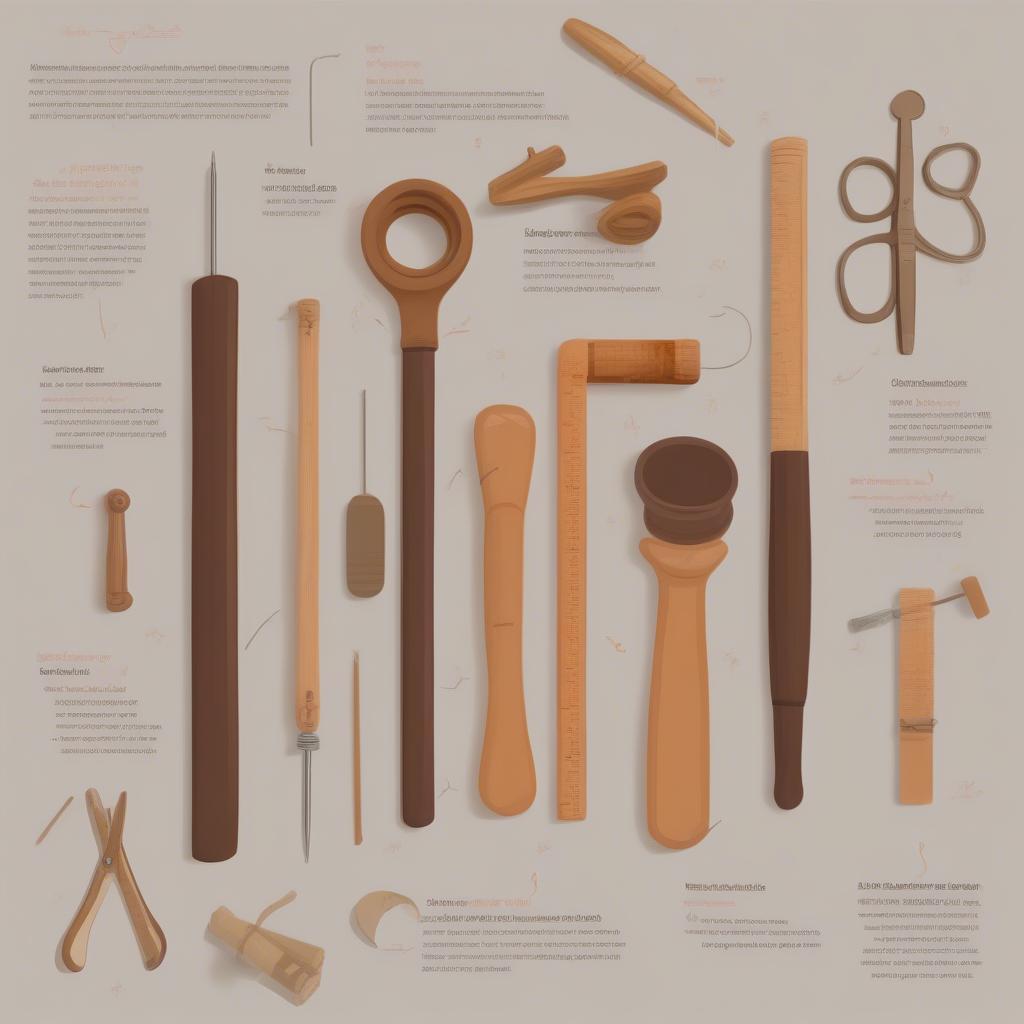Weave Chair
Chair Caning & Seat Weaving Handbook: A Comprehensive Guide
Chair caning and seat weaving are traditional crafts that bring beauty and functionality to furniture. This handbook offers a comprehensive guide to understanding, appreciating, and even mastering these intricate techniques. We’ll explore everything from the history and different styles to the materials and tools you’ll need.
Understanding the Art of Chair Caning and Seat Weaving
Chair caning, specifically, involves weaving strands of cane into a geometric pattern on a chair seat or back. Seat weaving, a broader term, encompasses various techniques, including caning, rush seating, splint weaving, and Danish cord weaving. Choosing the right method depends on the chair’s style, age, and desired aesthetic. A chair caning & seat weaving handbook provides valuable information for both beginners and experienced crafters.
Different Styles of Chair Caning
There are several distinct caning patterns, each with its unique charm. Seven-step caning is a popular choice for its durability and intricate design. Six-step caning offers a simpler, yet elegant look. Pre-woven cane webbing is a convenient option for those seeking a quick and easy solution. Other patterns include double caning, binder cane, and herringbone caning.
 Seven-Step Caning Technique Demonstration
Seven-Step Caning Technique Demonstration
Exploring Various Seat Weaving Techniques
Beyond caning, seat weaving offers a diverse range of options. Rush seating uses twisted rushes to create a rustic and comfortable seat. Splint weaving employs thin strips of wood, often oak or ash, woven in a basket-like pattern. Danish cord weaving uses a continuous length of paper cord wrapped around a frame, creating a strong and supportive seat.
 Rush Seating Process Step-by-Step
Rush Seating Process Step-by-Step
Materials and Tools for Chair Caning & Seat Weaving
Whether you’re embarking on chair caning or exploring other seat weaving techniques, having the right tools and materials is essential. High-quality cane is crucial for a durable and beautiful finish. You’ll also need specialized tools like a caning awl, a peg, and a mallet. For other techniques like rush seating or splint weaving, specific tools and materials are required. A comprehensive chair caning & seat weaving handbook will detail these needs.
Selecting the Right Cane
Cane comes in various widths and qualities. Choose the appropriate width based on the chair’s design and the desired pattern. High-quality cane is more pliable and less likely to break during the weaving process. Proper storage of cane is essential to maintain its flexibility.
“Choosing high-quality cane is a worthwhile investment,” says Amelia Blackwood, a renowned furniture restorer with over 30 years of experience. “It ensures the longevity and beauty of your finished piece.”
 Essential Chair Caning Tools Kit
Essential Chair Caning Tools Kit
Restoring and Repairing with Chair Caning & Seat Weaving
Chair caning and seat weaving are not only valuable skills for creating new pieces but also for restoring and repairing existing furniture. Bringing new life to a cherished family heirloom or a vintage find can be a rewarding experience. A thorough chair caning & seat weaving handbook offers guidance on assessing damage and choosing the appropriate repair method.
“Restoring a chair using traditional weaving techniques is like preserving a piece of history,” shares John Carpenter, a master craftsman specializing in antique furniture restoration. “It’s a way to honor the craftsmanship of the past while creating something beautiful for the future.”
Conclusion
Chair caning and seat weaving offer a unique way to connect with traditional crafts and add a touch of artistry to your furniture. Whether you’re a beginner or an experienced crafter, a chair caning & seat weaving handbook is an invaluable resource. From understanding different weaving styles to selecting the right materials, it empowers you to create beautiful and functional pieces that will last for generations.
FAQ
- What is the difference between chair caning and seat weaving?
- What type of cane is best for beginners?
- Where can I find high-quality cane and other seat weaving materials?
- What are the essential tools for chair caning?
- How do I repair a broken cane seat?
- What is the best way to clean and maintain a cane seat?
- How long does it take to learn chair caning?
Do you have more questions about chair caning and seat weaving? Explore our other articles on basket weaving, wicker furniture care, and rattan craft projects.
Need assistance? Contact our 24/7 customer service team at +84 388 951 999 or visit our offices in Hanoi, Vietnam, or Tech Avenue, Suite 12, San Francisco, CA 94105, USA.
